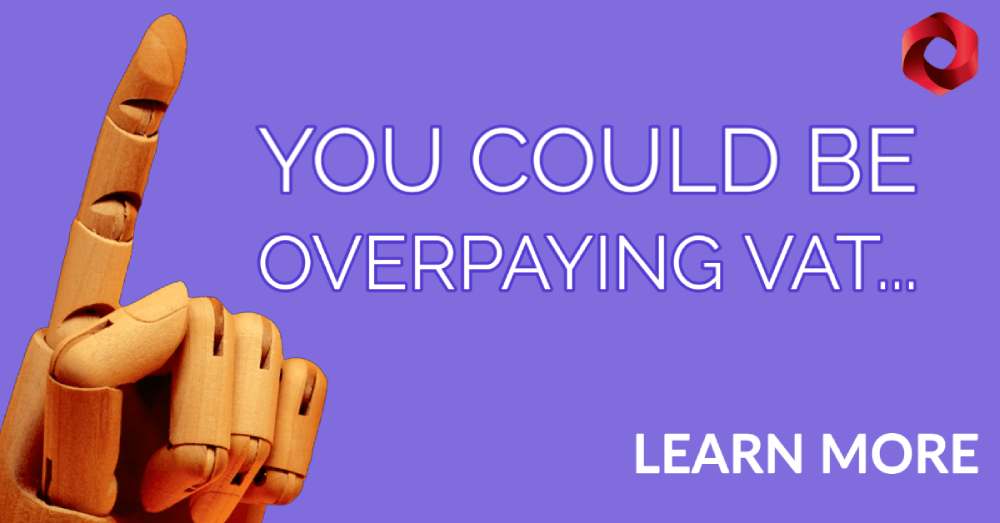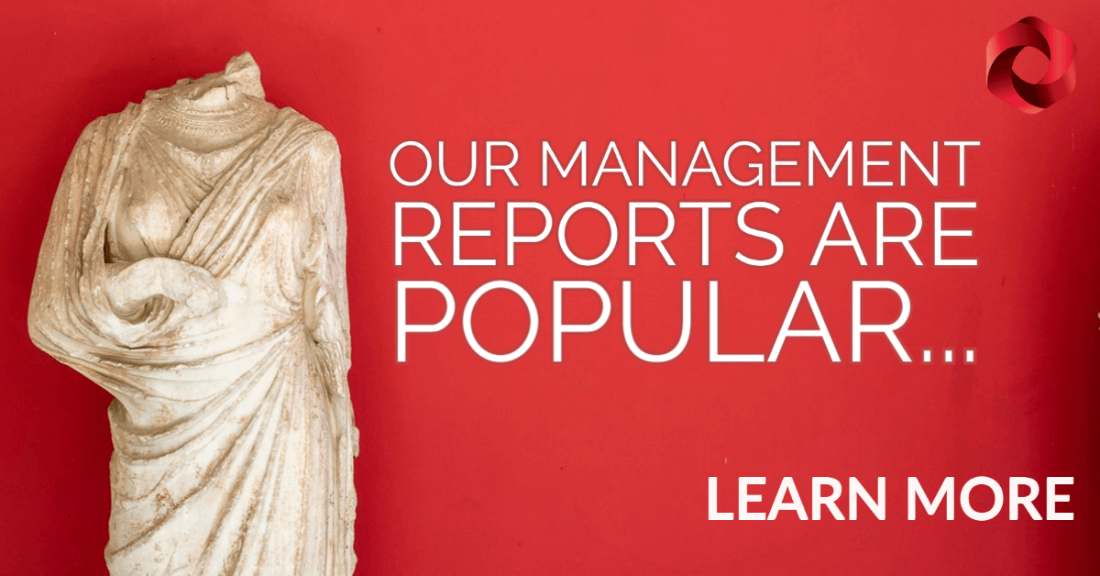Tips for maximising your R&D tax credit claim
- September 2021
- 5 minutes
Here are the top 10 tips for preparing an accurate, compliant, and fully maximised R&D Tax Credits claim.
Preparing an R&D Tax Credit claim can be complicated work. It takes a mixture of financial rigour, technical expertise, and legislative understanding that few companies have in the house. If your claim contains errors or HMRC suspects that you are submitting ineligible development work, you could face an HMRC compliance check. This could delay your funding by several months.
 Tip 1: Figure out how big you are
Tip 1: Figure out how big you are
When it comes to R&D Tax Credits, HMRC says companies come in two sizes: SME (small to medium) and large.
SME R&D Tax Relief (which is far more generous) is usually available to SMEs, whereas large corporations are only eligible for the RDEC (Research and Development Expenditure Credit) scheme.
Before tackling your claim, you need to work out how big you are. Under R&D tax law, HMRC says a large company is one with either:
- More than 500 employees
- Or an annual turnover of over €100 million and a balance sheet worth over €86 million
A business that meets these criteria is classified as a small or medium-sized enterprise (SME) and is eligible for the SME scheme.
Size, however, isn’t everything. Even if they meet the definition of a small business, some companies must file a claim with RDEC.
 Tip 2: Don’t take Tax Credit for ‘Granted’
Tip 2: Don’t take Tax Credit for ‘Granted’
If you’ve received grant funding, it could affect your tax credits claim. The nuance here is whether your grant contributed to the projects that you’re claiming tax credits for. In that case, it depends on what kind of grant you’ve received.
There are two kinds: notified state aid and non-notified state aid.
Notified state aid grant
If your grant was notified state aid, you can’t claim tax credits under the SME scheme for the project that’s been funded by the grant.
However, you can claim tax credits under the RDEC scheme
Non-notified state aid grant
If your grant was unnoticed state aid, your project’s R&D Tax Credit eligibility is determined by how the grant contributed to its funding.
If the grant is paid for the entire project, you should file under the RDEC programme, which will reimburse up to 9.7% of your development costs. That’s on top of the grant money you’ve already gotten. Note that the only payroll, externally provided workers, and R&D consumables are covered under this programme. Subcontracted expenses are not eligible for reimbursement.
If the grant didn’t contribute towards any of the project’s R&D-related expenditure, then it won’t affect your tax credits claim.
If the grant-funded only a portion of the project’s R&D expenditure, you can claim tax credits through a combination of the RDEC and SME schemes. Tax credits from the RDEC scheme will apply to the expenditure covered by the grant. Tax credits from the SME scheme will apply to the remainder.
 Tip 3: Know what you can and can’t claim for
Tip 3: Know what you can and can’t claim for
One of the most crucial aspects of the process is understanding what you can and cannot claim for. It’s also quite challenging.
On the one hand, you want to maximise your windfall by claiming as much as possible.
Incorrectly claiming for things, on the other hand, will raise an immediate red flag with HMRC, potentially delaying your claim or triggering a lengthy compliance check.
Costs that qualify for R&D Tax Credits are called ‘qualifying expenditures’. You can find a full list of them here. If you still aren’t sure if you can claim for something, the best thing to do is speak to an R&D Tax Credits expert.
In the meantime, here’s how to avoid the two most common mistakes companies make:
- Always work in your company’s financial year rather than HMRC’s tax year. Expenses incurred outside of the financial year in which you are employed are not eligible for reimbursement in that year’s claim. As a result, always double-check that you’re claiming expenses in the correct calendar and time frame.
- You can’t list your directors as subcontractors, unfortunately. HMRC double-checks your listed directors regularly. Your claim will be flagged and may be delayed if they appear on Companies House.
Make sure your directors are listed correctly. You can’t use directors’ dividends as a qualifying expense in your application, either.
 Tip 4: Be savvy with your losses
Tip 4: Be savvy with your losses
One of the key tactics we use to maximise your tax credit return involves ‘moving around’ your losses. Using a mechanism called ‘surrendering your losses‘, even unprofitable companies can claim R&D Tax Credits and get some cash out of HMRC. Generally, it would be better to carry the loss forward and offset it against future profits, at a rate of 19% (the lowest rate corporation tax is charged at), than to surrender it immediately at a rate of 14.5%. However, in order to be offset successfully in future years, there needs to be actual profit.
If you are expecting continued tax losses in future years then you should surrender the present loss.
Carrying losses around is a complicated procedure, but it could earn your business an even greater return.
 Tip 5: Know if your company is ‘linked’
Tip 5: Know if your company is ‘linked’
Not all small businesses qualify for the SME R&D Tax Credit scheme. If a small business is part of a larger organisation, the two companies could be considered ‘linked’.
If a company is linked to another, the finances and employee manifest of the entire umbrella businesses must be taken into account when working out the company’s size (via the calculation referenced in the first tip).
Smaller businesses are frequently ineligible for the SME scheme due to this contingency, forcing them to apply for the RDEC scheme instead.
Companies frequently overlook this point and file under the incorrect scheme. So, here’s a quick test to see if your business is linked to another. If any of the following statements are true, your company is considered linked.
Linked company checklist
- More than 50% of the capital or voting rights of your company are owned by another company
- Another company can appoint or remove any of your management team
- A third party company can exert a “dominant influence” over yours
- Another company can indirectly achieve the above via agreements with other shareholders
A partner enterprise is one in which another company owns 25 percent to 50 percent of your company. In that case, the above-mentioned finances and headcount must be combined and added to the size of the claiming company.
There are exceptions to the ‘partner enterprise’ rule. If another company owns more than 25% of your business, you could still be considered autonomous if the other company does not exercise its control. This is true if the capital is owned by any of the following:
- Public investment corporations and VCs
- Individuals or groups of individuals with a regular venture capital investment activity who invest equity capital in unquoted businesses (‘business angels’), provided the total investment of those business angels is less than €1.25 million
- Universities or non-profit research centres
- Institutional investors, including regional development funds
- Autonomous local authorities with an annual budget of less than €10 million and fewer than 5,000 inhabitants
 Tip 6: Choose the right project(s)
Tip 6: Choose the right project(s)
Our next tip for claiming R&D Tax Credits is to ensure you’re selecting the right project(s) to claim for.
The difficulty is that the definition of ‘project’ changes depending on the context.
What you define as a ‘project’ basically depends on the granularity of detail. In other words, how many pieces do you divide an activity into?
Generally, you want to set the detail level so that you end up with 3-5 projects, and cover 1-3 of them at most in a claim.
It’s fine to cover a single project in your claim, so long as that’s a good presentation of what actually happened.
 Tip 7: Write a cracking technical narrative
Tip 7: Write a cracking technical narrative
Your technical narrative is what makes the money. It’s your chance to show that you did some R&D by resolving a technical issue or progressing the state of the art.
Writing your technical narrative
Here’s a top-level list of what you need to remember when writing your technical narrative:
- Write it from a technical perspective, not a managerial one. Companies often mistakenly write about non-technical challenges like changing user expectations or behind-schedule deliveries. These issues aren’t relevant to your claim. HMRC is only looking for proof that you solved a technical uncertainty or made a technological advance. Also remember that generally the more difficult it was to solve your problem, the more likely it was that you conducted R&D.
- Remember ‘KISS’ or ‘Keep It Simple, Stupid. Having a longer narrative won’t increase your chances of successfully filing a claim. Instead, we would advise you to put your energy into writing a short and sharp narrative, comprising 1-3 projects, and covering 2-5 sides of A4.
- Avoid using jargon. HMRC must be able to comprehend the problem you solved and the method you used to solve it. Buzzwords and technical jargon prevent them from doing so. You might want to have a stranger read your story to see if they can understand it. If they can, HMRC is likely to follow suit.
- Don’t be afraid to include information about projects that failed due to technical difficulties. This shows HMRC that the project is difficult to complete, even for experienced professionals.
 Tip 8:Balance the technical narrative to the size of the claim
Tip 8:Balance the technical narrative to the size of the claim
This next tip for R&D Tax Credits is simple but important.
Tie the length of your technical narrative to the monetary size of the claim.
There’s no need to write pages and pages. But you also must make sure to include necessary detail if a project was particularly expensive, complex or lengthy.
 Tip 9: Use the CT600 Shortcut
Tip 9: Use the CT600 Shortcut
The CT600 is the green document you submit each year along with your financial calculations that give HMRC an outline of your tax position.
We’ve discovered a way to use the CT600 form to accelerate the processing of your claim and lower the likelihood that it’ll face an HMRC enquiry.
You file your tax return as usual, including the CT600, but you don’t include the amount of the R&D Tax Credit claim. We then file an amended CT600 with the R&D Tax Credit claim amount included.
This ensures that your application is sent to an R&D Tax Credit specialist at HMRC. They are less likely to inquire about your application because they are more likely to understand it.
 Tip 10: Reconcile, Reconcile, Reconcile
Tip 10: Reconcile, Reconcile, Reconcile
Finally, go over your claim with a fine-tooth comb before filing, double-checking that all of your calculations can be traced back to your P&L, tax computations, and CT600.
Numbers that don’t add up are the biggest red flag for HMRC. For example, if you are claiming £200,000 for subcontractors but only have £45,000 in the P&L for that category. All costs must be matched and consistent with one another so that HMRC can easily determine which costs are where.


